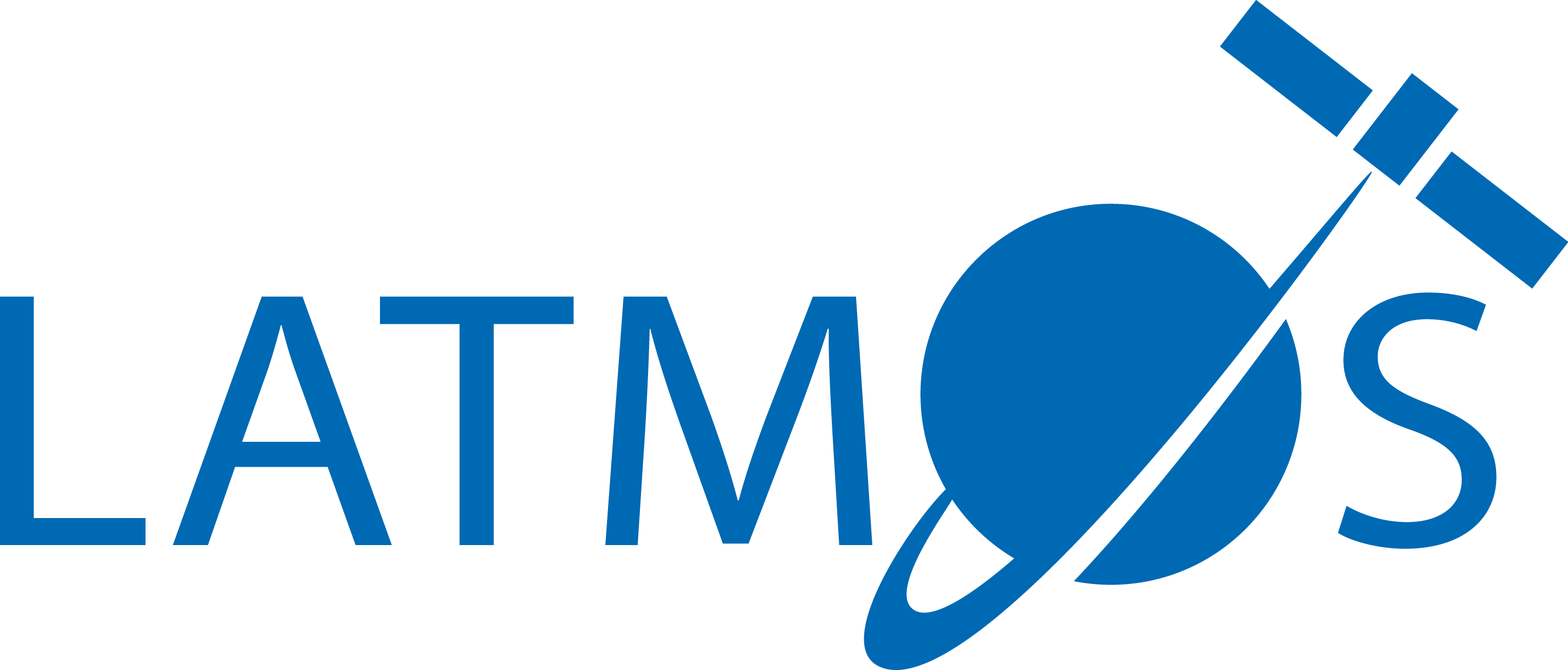
|
||
UVSQ-SATA Pathfinder CubeSat Mission for Observing Essential Climate Variables |
||
The space segment – the UVSQ-SAT CubeSat platformUVSQ-SAT is a nanosatellite development project underway based on CubeSat standard. UVSQ-SAT is a one-unit (1U) CubeSat designed to provide 11.10 cm × 11.10 cm × 11.35 cm useful volume (stowed configuration). LATMOS is prime contractor of the 1U CubeSat with the support of a manufacturer (ISIS) to build a dedicated satellite platform. Although the CubeSat is small, it contains all the critical subsystems and functions present in larger satellites. A configuration of the UVSQ-SAT nano-satellite is shown in Figure 2 and an overview of the UVSQ-SAT CubeSat properties is given in Table 2. 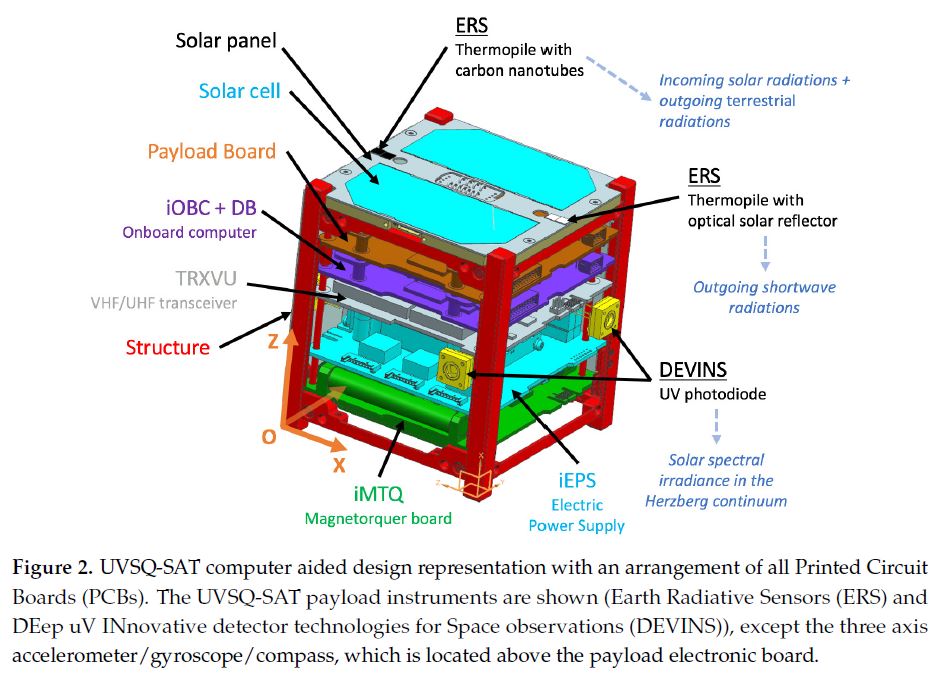 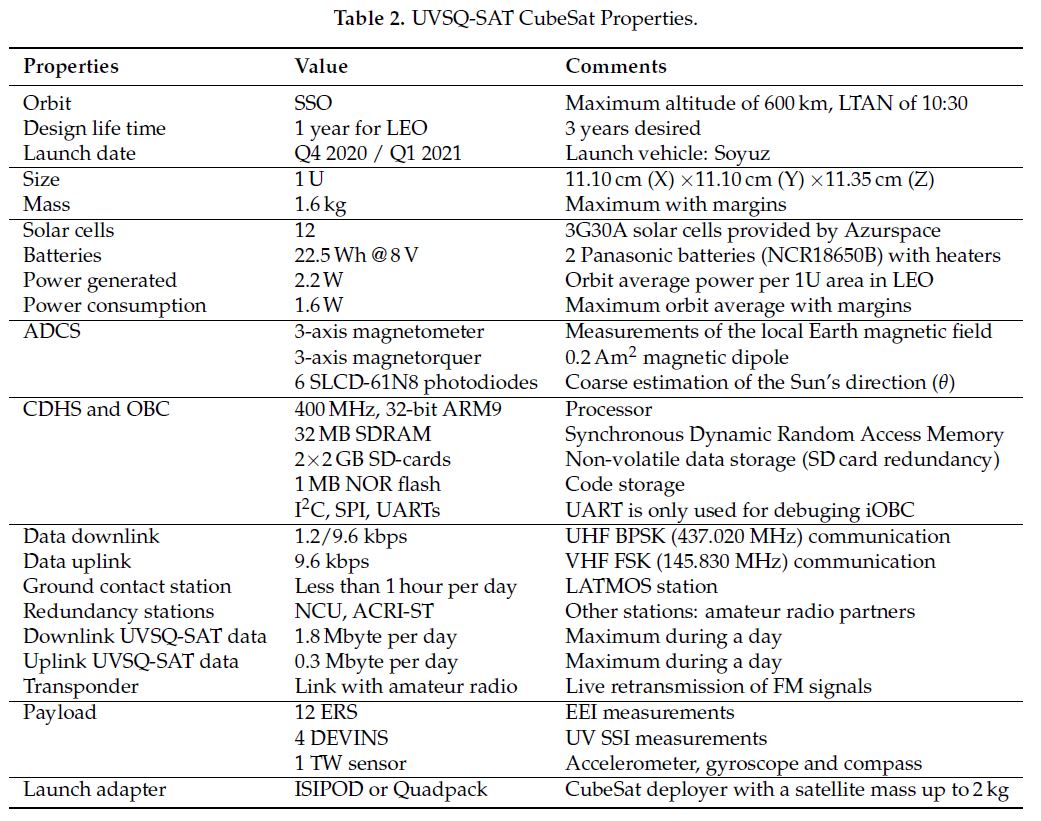 |
|||||
The ERS sensors
To measure with accuracy the incoming solar radiation (TSI) and the Earth Outgoing Radiation (EOR = top of atmosphere Outgoing Longwave Radiation (OLR) + Shortwave Radiation (OSR)), we will use new Earth Radiative Sensors (ERS).
ERS are sensors based on miniaturized thermopiles (active area of 5mm × 5mm, responsivity of ~ 0.2 μV per Wm−2) designed to measure the heat flux from a 180◦ field of view angle. The passive (cold) junctions of the thermopile are fully protected from radiation and in thermal contact with the UVSQ-SAT structure, which serves as a heat-sink.i Figure 3 shows the measurement’s principle of these sensors.
UVSQ-SAT uses an ERS sensor with carbon nanotubes and an ERS sensor with optical solar reflector on each side of the CubeSat.
The ERS sensors with carbon nanotubes will absorb all incoming solar radiation and outgoing terrestrial radiation.
They have a flat spectrum from UV up to 100 μm, and have a near-perfect cosine response.
The carbon nanotubes used (Vantablack from Surrey NanoSystems) are one of the darkest substances known, absorbing up to 99.964% at 700 nm if the light is perpendicular to the material.
These carbon nanotubes show excellent bidirectional reflectance distribution function (BRDF) performances for different incident angles and different scatter angles (total integrated scatter of 0.94% with an angle of incidence of 70◦).
The ERS sensors with optical solar reflector will absorb mainly top of atmosphere outgoing longwave radiation. They have a high reflectance from UV up to 3 μm. They have been selected since the variation of solar absorptance due to environmental exposure (thermal cycling, UV radiation, protons, etc.) is extremely weak. 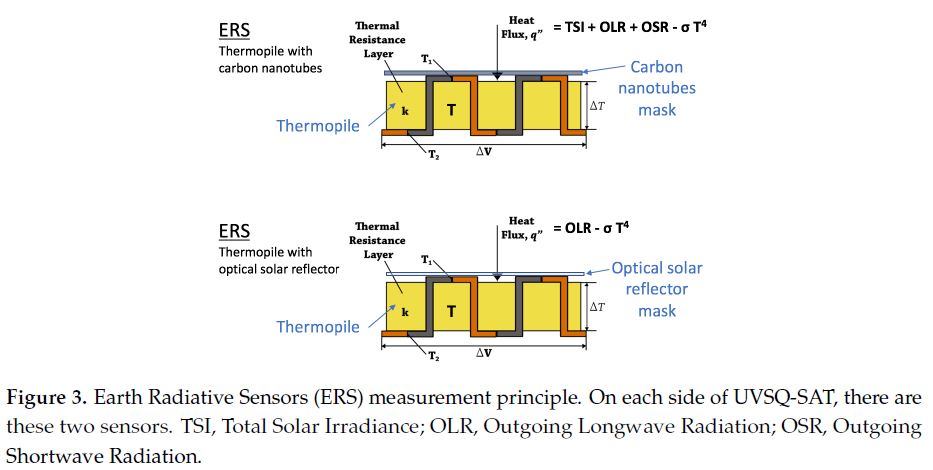
The large field of view of both sensors on each side of UVSQ-SAT allows to measure all fluxes (TSI, OLR, OSR, black-body flux of the sensor (σT4), residual fluxes (Moon, planets, etc.)).
Considering that we know the value of the solar flux (TSI measurement obtained from space-based solar radiometers), the sensors temperatures (UVSQ-SAT housekeeping data), the residual fluxes (ephemerides of various bodies of the solar system obtained from Institut de mécanique céleste et de calcul des éphémérides (IMCCE)), then we can determine OLR and OSR from a two-equations system (S) based on the following thermo-dynamical equations using 12 nodes (N=12 thermopiles).  Then, for ERS data processing, the first step will consist to develop deep learning methods to estimate the attitude of the UVSQ-SAT CubeSat using all housekeeping data (platform and payload inertial measurement units, 3-axis payload compass, coarse platform photodiodes for solar orientation, power on each solar panel, etc.). Indeed, UVSQ-SAT did not have an active attitude determination and control system (ADCS) that allows precise pointing of the CubeSat. This is one of the reasons for which the UVSQ-SAT CubeSat is equipped with broadband ERS sensors (with large field of view) on each side. In a second time, we will determine top of atmosphere outgoing longwave radiation (OLR) and shortwave radiation (OSR) as a time function from the rough preliminary equations system (S) given below and originates from Equation 1. The total solar irradiance will be considered as known and obtained from space-based radiometers (see ref publication).
|
|||||
The UV sensorsTo measure with accuracy the solar spectral irradiance in the Herzberg continuum (200 to 242 nm), we will use disruptive new UV detectors in Ga2O3. The main advantage with Ga2O3 detectors is the fact that they are intrinsically solar blind. So, they do not require cooling system to be sensitive to the Herzberg Continuum. This aspect should prevent them from degradation due to contamination. Moreover, the proposed Ga2O3 based detectors have a strong responsivity, an excellent dynamic, and remarkable resistance to radiation. UV sensors are small photodiodes using a standardized metal semiconductor package used for transistors and some integrated circuits base diameter of 8.9 mm, cap diameter of 8.1 mm, cap height of 6.3 mm). They are designed to measure the UV solar spectral irradiance from a 180° field of view angle with an active area of 1 mm ×1 mm and a responsivity of ~ 4 A/W. The UV sensors technology will be validated in the framework of the UVSQ-SAT mission (check in orbit that the detector degradation is weak despite the exposure to radiation (both ionization and displacement-damage effects). UVSQ-SAT will use a total of 4 UV photodiodes. For UV sensors data processing, we will use the 6 coarse platform photodiodes located on each solar panel for determining the Sun’s direction. From the knowledge of the Sun’s direction (θ), we will determine the UV solar spectral irradiance (SSI(λ)) from the following instrumental equations based on our experience and heritage in solar instrumentation developments and observations.  The UV sensors absolute calibration can be performed using the primary standard of spectral irradiance (Physikalisch-Technische Bundesanstalt (Germany) and/or LASP facilities (USA)). The UVSQ-SAT UV SSI expected performances depend mainly on the absolute calibration of the photodiode responsivity (S(λ,V,T)) and on the UV sensors noise detection. The stability per year of the UV sensors will be demonstrated in orbit as its low aging in UV.
|
|||||
The TW sensorThe TW sensor (50 mm ×25 mm ×8 mm) consists of an inertial measurement unit (a accelerometer and a 3-axis gyroscope) and a 3-axis compass (simple type of magnetometer). TW is a new 3-axis accelerometer/gyroscope/compass, which will be used for determining the attitude of the UVSQ-SAT CubeSat. In the framework of the UVSQ-SAT mission, a qualification/validation of the TW (Teach’ Wear) technology to TRL 9 ("flight proven") will be done through a successful mission operations and validation of the expected performances of the TW sensor in space. The TW sensor will be used in the future as a medical devices to prevent health problems for astronauts in space. Indeed, astronauts are subjected to serious health problems due to the nature of their jobs, which involve extreme atmospheric conditions and environments, particularly during prolonged space missions. 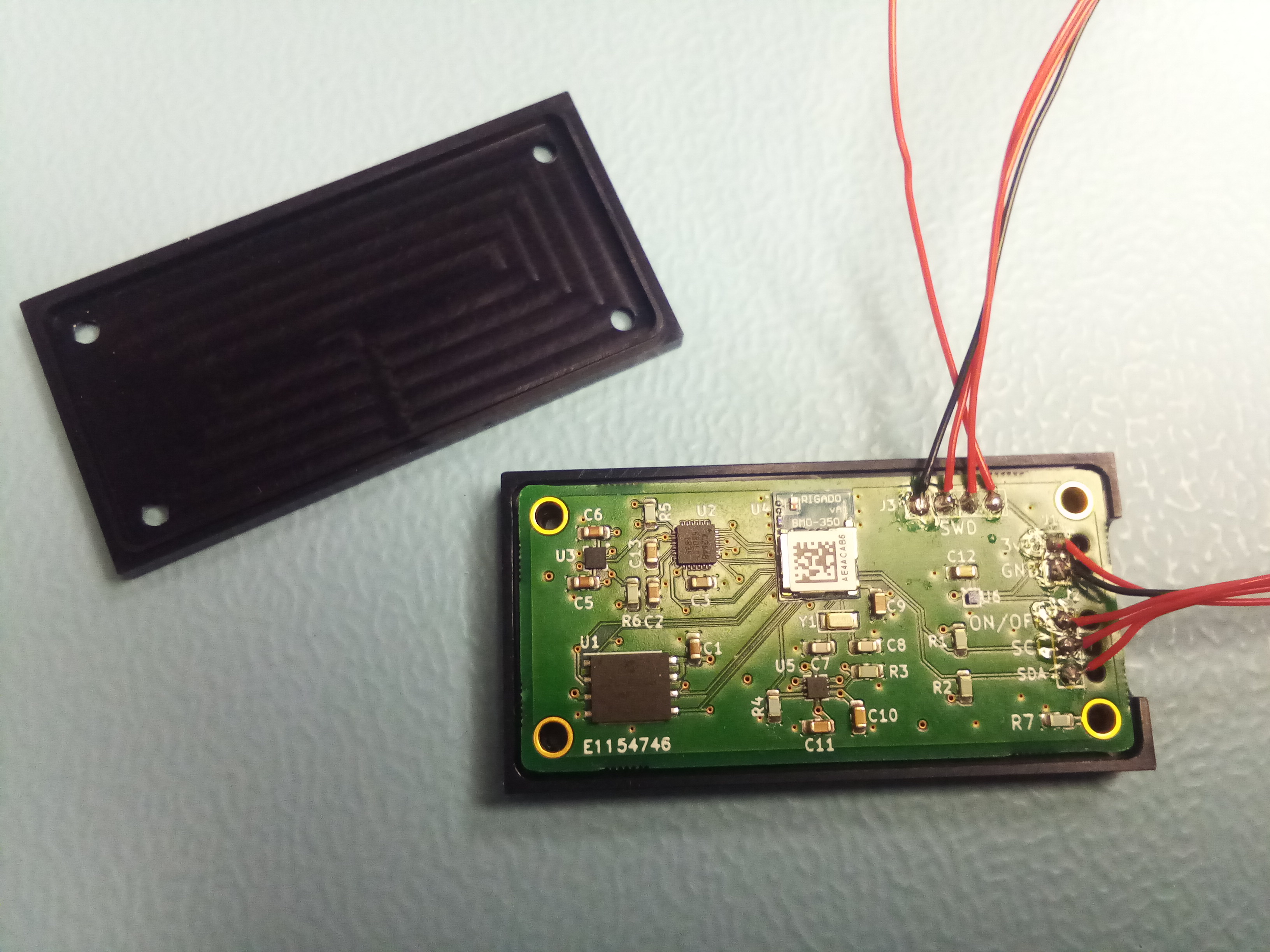 |
|||||